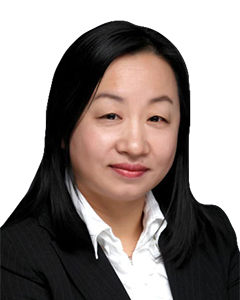As an important strategic resource, standard essential patents (SEPs) play an important and dominant role in the communications field.

Patent attorney
Sanyou Intellectual Property Agency
Technical solutions that are incorporated into communications standards will be adopted by many manufacturers. Even a tiny technical point may be applied to hundreds of millions of devices or products. The claims of communications SEPs can therefore have a tremendous market value even if the scope of protection is relatively small.
Moreover, communications standard technologies may not represent a drastic leap forward, but an improved technical solution for a technical problem addressed in a standard, protocol or proposal. As a result, SEP applications for communications do not typically improve the prior state of the art significantly and their inventiveness is very likely to be questioned in the course of examination.
Since the United States market has extensive prospects and the country has a strong capacity for scientific research, it has become an indispensable component for enterprises’ patent regimes and operations. It is important, therefore, for companies in the communications field to have their SEP applications examined and approved in the US. According to article 103 of the US Patent Law, claimed inventions must meet the requirement of non-obviousness (i.e., inventiveness). As for how to determine “non-obviousness”, specific standards have been provided in the cases of Graham v John Deere (1966) and KSR v Teleflex (2007).

Patent attorney
Sanyou Intellectual Property Agency
The ‘non-obviousness’ standard
In the Graham case, the US Supreme Court set out three factors for considering and determining non-obviousness: the scope and content of the prior art; differences between the prior art and the claims; and the level of ordinary skill in the pertinent field. The teaching-suggestion-motivation (TSM) test is often applied.
The TSM test emphasises the following conditions: there must be some inspiration or motivation in the analogous documents, or the knowledge generally available to technicians in the field for making modifications to the analogous documents, or combining the teachings in the documents; there must be a reasonable anticipation of success; and the prior art references must teach or suggest all the claim limitations.
In the KSR case, the US Supreme Court modified the application of the TSM test. In the opinion of the court, the TSM test should not be treated as the sole standard for judgment and be implemented strictly. The court stated that the examiners might also consider additional theoretical grounds, and emphasised that any theoretical grounds applied must provide a correlation between findings of fact and obvious legal conclusions.
Seen from the Graham and KSR cases, although the non-obviousness threshold had been raised in the process of US patent examination, the TSM test was still a common standard for use in the course of examination.
Coping with US examinations
In comparison, greater importance is attached to technical considerations in the course of inventiveness examination in China, and the examiners have relatively more freedom in applying “inspiration” or “motivation”. They place a greater stress on technical issues and technical ideas as well as the consequent technical effects. Therefore, in general, when dealing with the inventiveness aspect in a Chinese patent application, it is necessary to state that there is no technical motivation, inspiration or teaching in either the analogous documents or the common knowledge, based on arguing that the technical features are not revealed by the analogous documents. The corresponding technical effects can therefore be of great help in supporting the argument.
In the process of US inventiveness examinations, more emphasis is put on technical features and the examiners have relatively little freedom in applying “inspiration” or “motivation”. They stress more on checking whether technical features are uncovered by any analogous document. Therefore, in general, when dealing with the inventiveness aspect in an US patent application, it is a stronger strategy to emphasise that technical features have not been uncovered by the analogous documents or to modify the claims so that technical features are not uncovered by any analogous document. In contrast, arguing about technical ideas and technical effects may not work well.
Therefore, when dealing with US inventiveness examinations, Chinese applicants need to understand the difference between the thought processes behind Chinese and US patent examinations. In cases where application documents do not vary greatly from analogous documents, it is probably not an effective strategy to just emphasise the difference in technical ideas and technical effects in the course of applying for a patent in the US.
When addressing the inventiveness aspect of SEP applications for communications, applicants may consider adding more technical features based on the characteristics of the SEPs, so as to make clearer the differences in technical solutions from the analogous documents.
Take “the first user device maps control information to a time-frequency resource, where a symbol in the subframe carries reference signals” as an example. If the examiner finds that an analogous document has revealed that “the user device uses the fourth symbol in the subframe to carry reference signals and send control information to the base station”, then from the perspective of US patent examination, it may not be a good strategy to doggedly argue the difference in technical thinking between them.
Consideration could be given to amending it to read “the first user device maps side link control information to the side link time-frequency resource, and the sixth symbol in the subframe carries side link reference signals”.
In this way, since the modified version can further clarify the difference from the analogous document by limiting “side link communication” and “sixth symbol”, it may become a persuasive solution. At the same time, if the modified version can still align with the communications standards, it will not affect the value of the patent.
In summary, under the guidance of the Graham and KSR cases, inventiveness examination of patents in the US focuses more on the technical characteristics defined in the claims. The internal logical relationship between various elements and the roles they play do not necessarily have a positive impact on the inventiveness argument. Considering the characteristics of SEP applications for communications, it is suggested to focus on the features that have not been uncovered and on making necessary further limitations instead of placing too much emphasis on technical ideas and technical effects.
Tian Yong and Tao Haiping are patent attorneys at Sanyou Intellectual Property Agency

16/F, Block A, Corporate Square
No.35 Jinrong Street, Beijing 100033, China
Tel: +86 10 8809 1921 / 8809 1922
Fax: +86 10 8809 1920
E-mail: sanyou@sanyouip.com





















